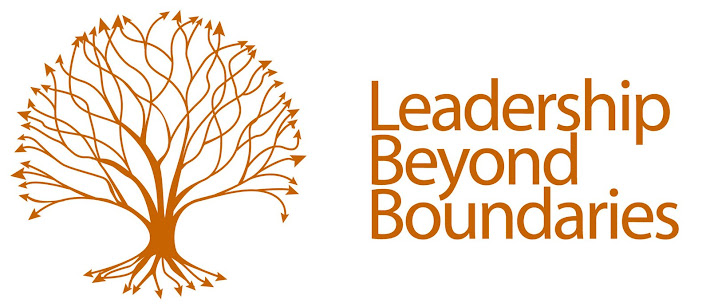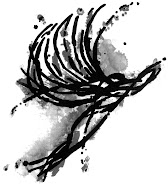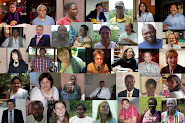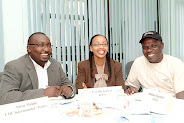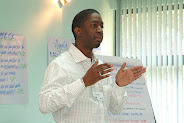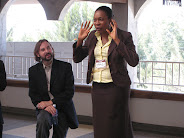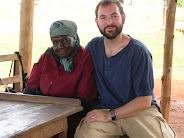
Over 1,900,000 Ugandan children have lost at least one parent to AIDS. With numbers ranging from 1.2 to 1.7 million, Uganda currently has one of the highest populations of orphans in the world.
In March I had the opportunity to visit an orphanage in Uganda that is caring for over 75 orphans and educating an additional 150 local village children. A long time friend, Steadman Harrison III from the Center for Creative Leadership in Greensboro, NC invited me to join him on a trip to this wonderful place that he has been visiting for over 4 years. Good Shepherd’s Fold Orphanage is located in a small village called Buundo, about 15 miles from the town of Jinja, where the water of the Nile river begins its long journey from Lake Victoria to the Egyptian delta. When I say small, I mean one dirt road and a web of narrow dirt paths to most of the mud homes.
My company sets aside one day for service per employee that can be used as for a service project. I used this day in special service to the orphanage by taking portraits of each child. These pictures will be used to keep record of the children, provide an up to date photo to the financial sponsors of each child, create a special photo album for the guest house so that visitors can better learn each child’s name, and my own secret wish - to give each one a special picture of themselves to keep in their few personal belongings.
Caralina, one of the missionaries’ children, was my primary helper (although my entourage grew and grew as more kids heard what I was doing). She brought a list of all the children to make sure we got everyone’s picture. I brought enough equipment with me to do a more formal lighting setup with a photographer’s umbrella, stand and lights. After milling over the logistics of getting every kid to the correct spot in some orderly form and sit still for some stranger to take their picture I opted for a lighter approach. Every house has a large porch and the shaded sunlight was soft enough for good portraits. I also needed a dark backdrop as dark skinned children lose lots of their detail in high contract lighting. The exterior doors at each house are made of gorgeous tropical hardwoods that served as perfect backdrops (the woodworker in me kept trying to find a way to bring one home in my suitcase). So Caralina and I went from house to house. She gathered the children in a group outside each house. Enticed by the promise of a “sweetie” (lollipop), I lined them up, one at a time in front of the door for their picture. Caralina carefully made sure every child was checked off the list. It took a lot of running around and a good sunburn on my neck but we managed to get the job done.
At first it was just an overwhelming number of children and I’m not very good at remembering names. For Ugandan children, forgetting their name can be taken as a sign that you don’t care for them. So I tried my best to remember the few names I could and for the others I just did what I could to avoid having to use their names in conversation. Fortunately you don’t have to know a kid’s name to play with them.
The missionaries running the orphanage do an excellent job to keep everyone healthy, well fed, protected and well educated. The local staff of 7 guards, 10 farmers, 4 cooks, 10 housemothers, 6 maintenance workers, a nurse, an office manager, 2 housekeepers and 12 teachers provide tremendous care for these beautiful children. They grow enough food on their own farm to feed all the children with enough left over to sell to the local villagers. The maintenance department keeps the buildings and vehicles in great order. There is a beautiful church on the grounds. I will never forget the beautiful singing of the children and being surrounded by the little kids that just wanted to sit close and hold my hand for the whole worship service. A little boy named Jimmy, who just lost a front tooth the day before, wiggled in close to my left side and grinned with a big gap the whole time.
When you are at an orphanage the question always arises about how do you get parents interested in adopting these children? Wouldn’t it be much better for them to live in an affluent country like the U.S. or the U.K.? In some cases the answer is “yes.” There are many younger children who would clearly flourish elsewhere and not miss the culture they are born into. Some of the older children have a very strong desire to be elsewhere and adoption would be a great option for them. However, most of the children have a very deep sense of family with the other children and the caretakers. They are Ugandans after all and Ugandans have a strong sense of social fabric. A child taken out of Uganda trades two very different lives: a simple life where basic needs are met and joy comes from the simplicity of an evening soccer game for a world where our excesses kill us in the form of fatty foods, stress from credit card debt and addictions of all kinds. It’s not that adoption isn’t a great option, just that it’s a more complicated issue than I ever thought about.
Steadman has grown particularly close with a very special group of boys who live in structure called Agape house. When he first started visiting the orphanage 4 years ago, Agape house was reserved for the sickest children. A number of the children are HIV positive and they were kept separate from the rest of the children mainly for their own protection from illness. On this trip we were surprised to find that Agape house had been integrated with a full age range of boys from high school to young elementary school sick and healthy. We spent several evenings in Agape just talking with the boys, playing some guitar songs together and just giving them the hugs around the shoulders that they so badly want from a father figure. They are such sweet kids with not even a hint of cynicism. My dear friend was very choked up the last evening as we left Agape house telling me how badly these kids need a father and how much he wants to bring his family to Uganda and live there. After 3 weeks of being away from them I’m beginning to better understand his feelings. The missionaries who live there and the housemothers do a wonderful job taking care of the kids and giving them whatever affection they can but it’s clearly too big of a job to give each child the personal attention they need.
You can help. Donations are always needed. There are always more children to take in. There are always improvements to be made to structures and there are always ideas for improving the lives of the children. If you feel a calling to consider adoption there are many children who would love to meet you. If you have any interest in the beautiful, friendly people of Africa – find a way to go there. If you would like to know more about the orphanage visit their web site www.goodshepherdsfold.org. There is so much more to share about the trip. Please contact me if you would like to know more.
